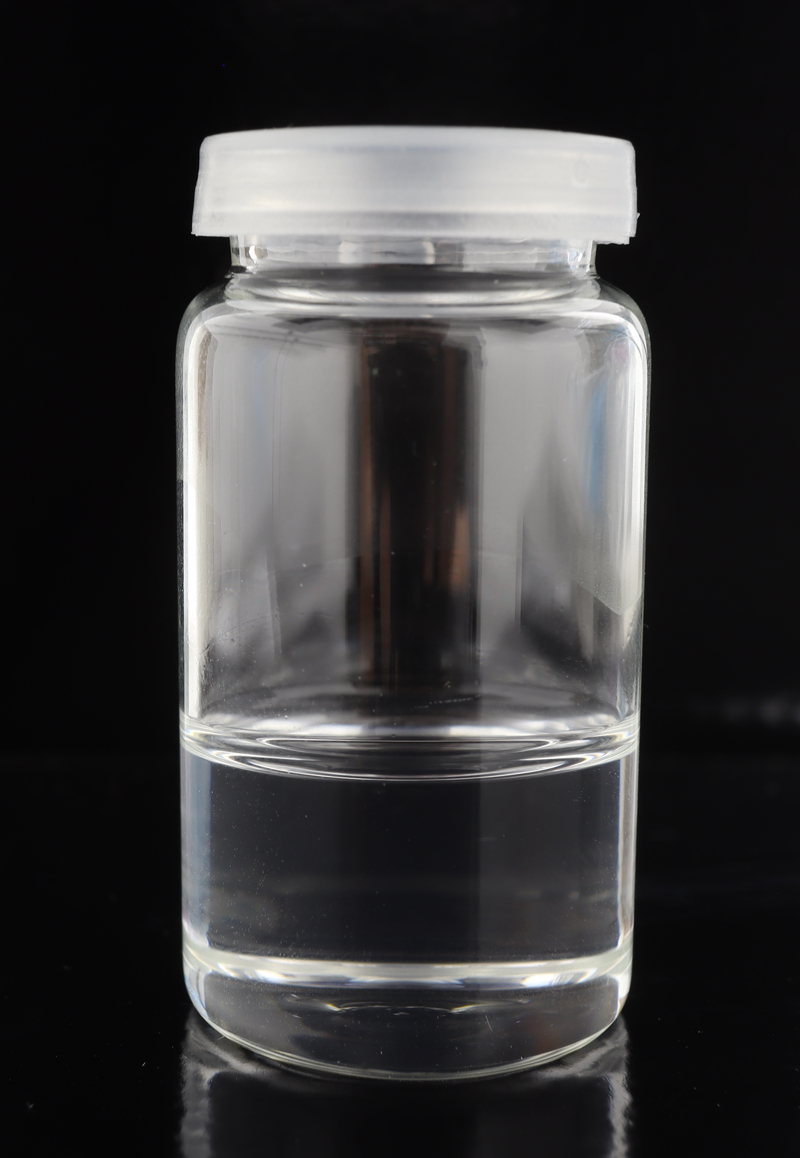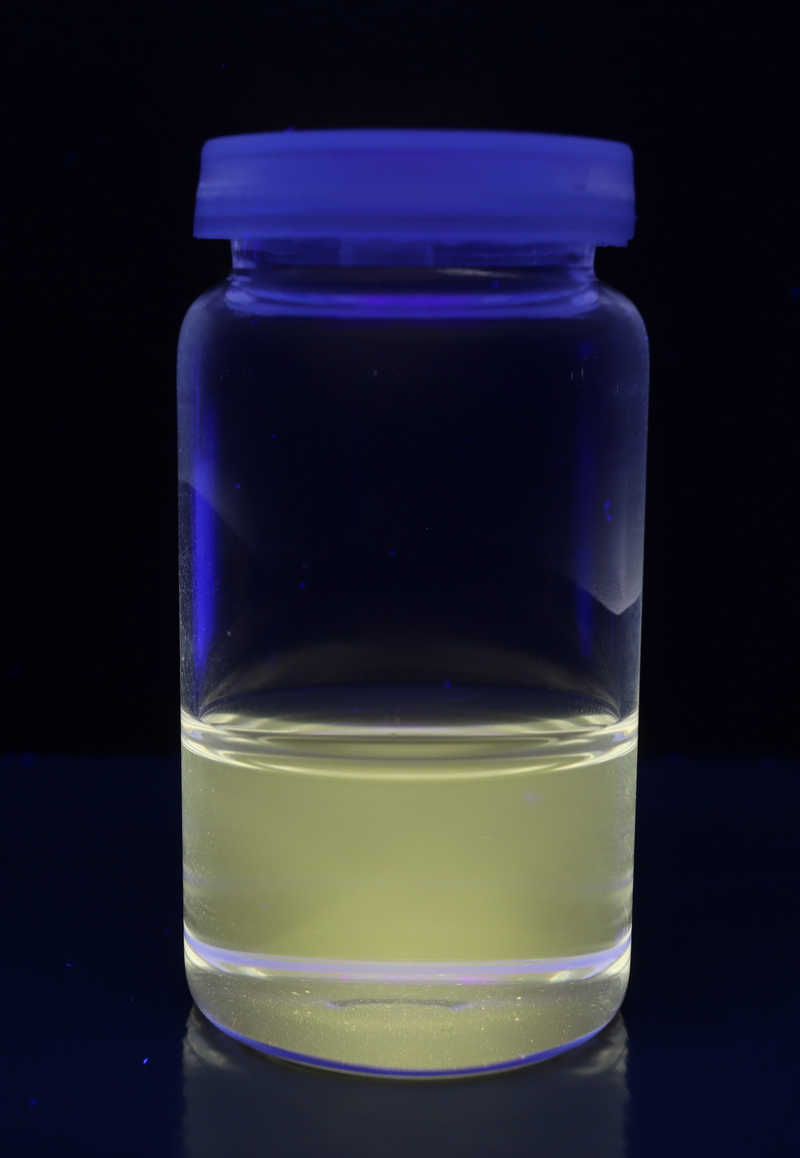Zinc Oxide Quantum Dot INK DMSO – L | CAS 1314-13-2
Zinc Oxide Quantum Dots-based ink (ZnO-DMSO ink)
Patented nanocolloidal dispersion of ZnO QDs in easily removable solvent molecules. Free from any organic stabilizing molecules and salt impurities allowing to cast pure ZnO thin films featuring no agglomeration, high crystallinity, stability, excellent electrical contact, and a low-density defects of ZnO. Recommended for fabrication of low-temperature processed non-passivated ETL layers in state-of-the-art devices with improved performance and enhanced operational stability.
Monodispersed, narrow size distribution, solution-stable, bright yellow luminescence upon excitation with UV.
- Superior nanocrystal quality in comparison to sol-gel derived ZnO QDs
- Superior nanocolloidal solution – no agglomeration in time
- Lack of bulky organic coating and organic stabilizing molecules – excellent electrical contact
- No surface defects – improved charge separation and stability
- High-purity ZnO Nanoparticles without any added process metal impurities
General properties
| Appearance | Transparent nanocolloid |
| Excitation | 330 nm ± 5 nm |
| Emission (max.) | 530 nm ± 5 nm |
| FWHM | 135 nm ± 5 nm |
| Core size | 2 – 10 nm |
| Solubility | Colloidal solution in DMSO |
| Concentration | 5 mg/ml |
| CAS | 1314-13-2 |
| Storage conditions | Room temperature, to be used in 3 months after opening |
| Additional information | |
| Applications | Photovoltaics (perovskites and organics), OLED, QLED Sensors Printed electronics Catalyst |
| Functions | Electron transfer Electron injection Hole blocking Sensing material |
| Typical mean size | ~5 nm |
| Methods of deposition | Spin coating Dip coating Spray Coating Ink jet |
| Post-deposition treatment | Thermal heating at >150°C to remove DMSO |
| Purity | Standard purity Electronic purity upon request |
| Chemical compatibility | All the absorbers and emitters including perovskites. |
References:
- Chavan, R. D., Wolska‐Pietkiewicz, M., Prochowicz, D., Jędrzejewska, M., Tavakoli, M. M., Yadav, P., Hong, C., Lewiński, J. (2022).
Organic Ligand‐Free ZnO Quantum Dots for Efficient and Stable Perovskite Solar Cells.
Advanced Functional Materials, 2205909. https://doi.org/10.1002/adfm.202205909 - Prochowicz, D., Tavakoli, M. M., Wolska-Pietkiewicz, M., Jędrzejewska, M., Trivedi, S., Kumar, M., Zakeeruddin, M., Lewiński, J., Graetzel, M., Yadav, P. (2020).
Suppressing recombination in perovskite solar cells via surface engineering of TiO2 ETL.
Solar Energy, 197(December 2019), 50–57. https://doi.org/10.1016/j.solener.2019.12.070
- Lee, D., Wolska-Pietkiewicz, M., Badoni, S., Grala, A., Lewiński, J., & De Paëpe, G. (2019).
Disclosing Interfaces of ZnO Nanocrystals Using Dynamic Nuclear Polarization: Sol-Gel versus Organometallic Approach.
Angewandte Chemie – International Edition, 58(48), 17163–17168. https://doi.org/10.1002/anie.201906726
- Grala, A., Wolska-Pietkiewicz, M., Danowski, W., Wróbel, Z., Grzonka, J., & Lewiński, J. (2016).
‘Clickable’ ZnO nanocrystals: the superiority of a novel organometallic approach over the inorganic sol–gel procedure.
Chem. Commun., 52(46), 7340–7343. https://doi.org/10.1039/C6CC01430E
PRODUCT INTENDED FOR RESEARCH AND DEVELOPMENT PURPOSES ONLY. NOT INTENDED FOR ANY ANIMAL OR HUMAN THERAPEUTIC OR DIAGNOSTIC USE.
€250.00
Download specificationDownload MSDS

